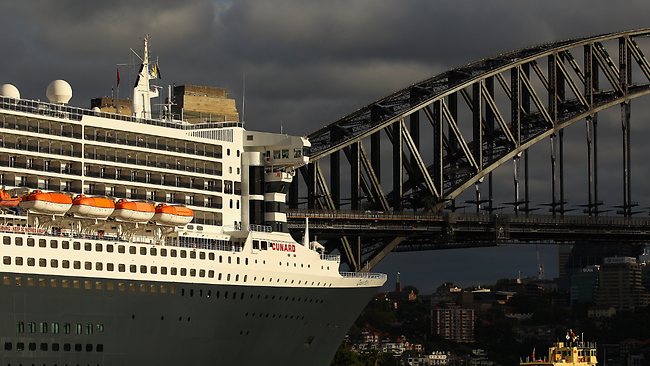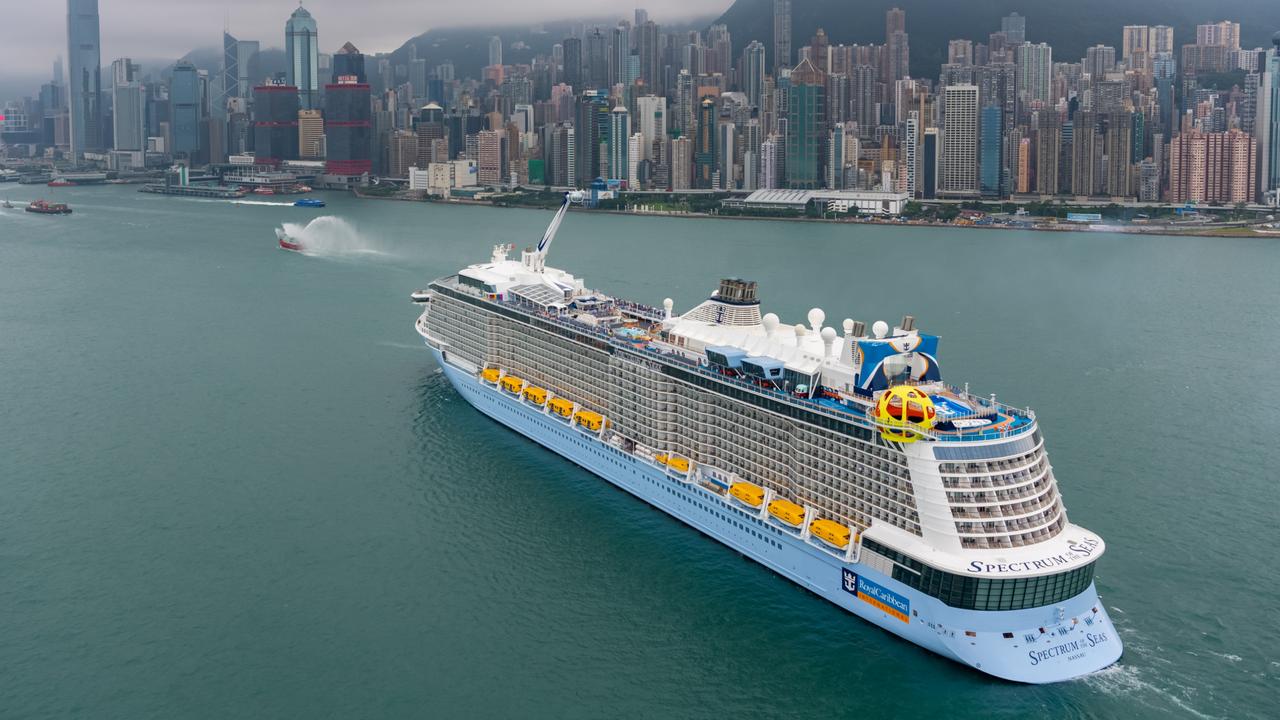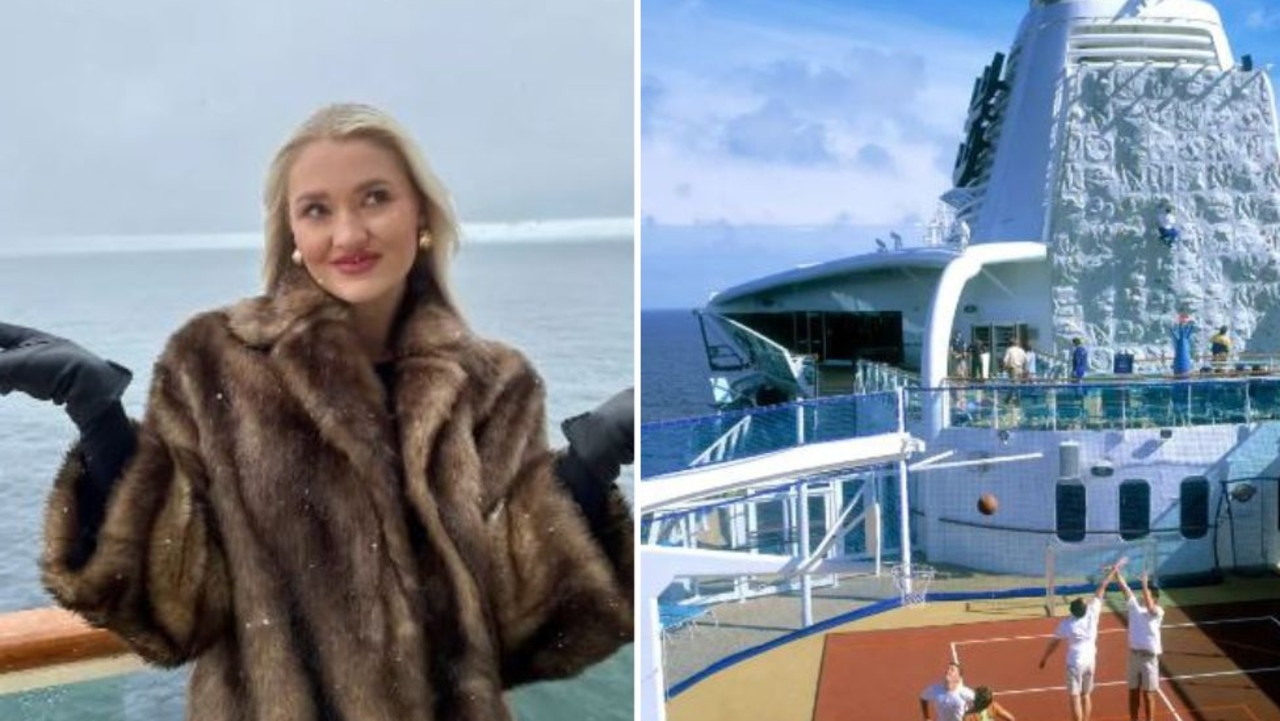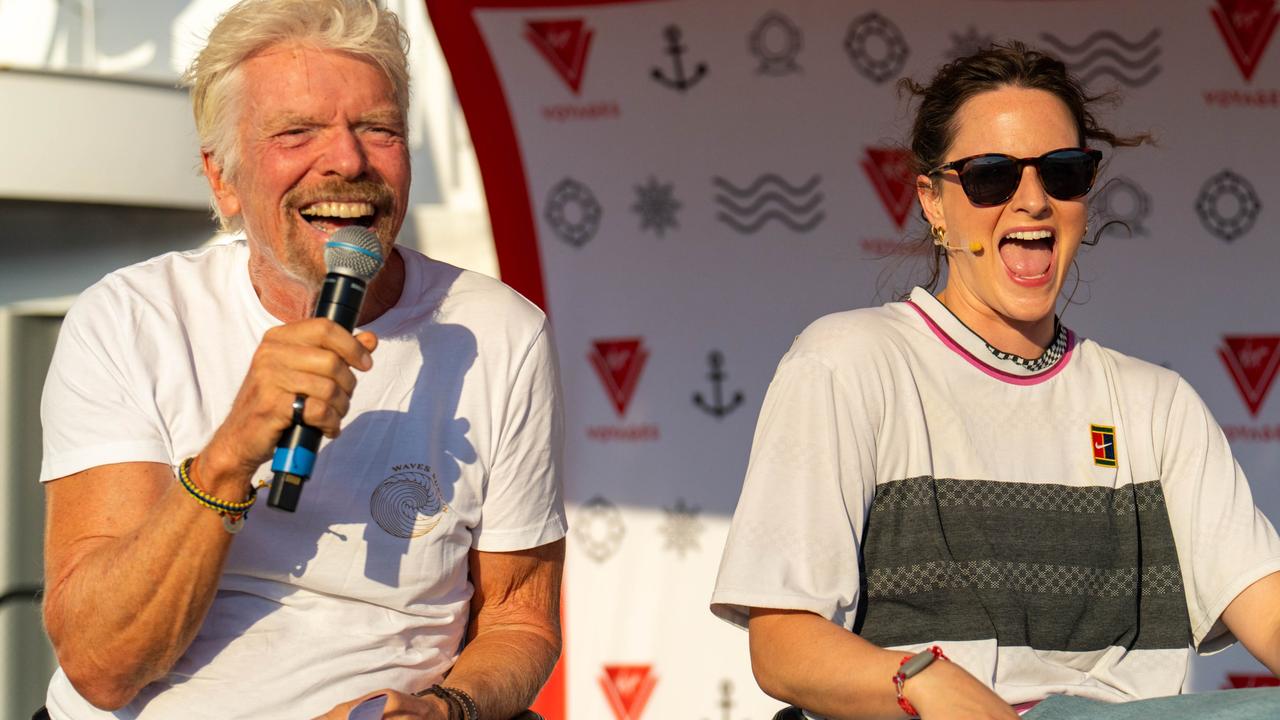Behind the scenes of the Queen Mary 2 cruise liner is where the magic happens
While the Upstairs on board QM2 lets a commoner live like a king, it's the hard work Downstairs that makes it happen.

THE world of luxury cruise ships is a little like TV's Upstairs, Downstairs and Downton Abbey, where a life of privilege and splendour for guests is made possible by the relentless hard work of staff.
In the most regal of ships afloat, Cunard's gracious Queen Mary 2 which arrived in Sydney today, guests live in an upstairs world of grand ballrooms, chandeliers, champagne, fine dining, sweeping staircases, exquisite artwork and the elegance of the golden era of cruising.
"Downstairs" it is a slightly different story - the small army of 1250 crew and staff, who ensure smooth sailing, work as much as nine months at a time, in a parallel world without the ballgowns, designer labels, high tea, plush carpets and artwork enjoyed by the 2600 guests.
The Sunday Mail was allowed entry through the anonymous doors which lead to a labyrinth of corridors and work areas which keep the ship operating.
One large revolving door separating the grand "Britannia" dining room with the kitchen was like going through Harry Potter's magical entrance to platform 9 3/4 and being transported into a different world.
"Muggle" guests are not allowed through as waiters carrying trays holding 10 dishes emerge with food.
On the business side, it is all stainless steel, huge vats, long service bays and military precision, for a kitchen servicing just one of the ship's multiple restaurants - the "Britannia" alone seats up to 1200 diners at a sitting.
In the kitchen, the only artworks are signs reminding people to wash hands often, and those stressing safety and the values Cunard demands from its staff.
The Queen Mary 2 has nine kitchens with 150 chefs preparing 16,000 meals a day cooked to order and 80 utility staff including dishwashers cleaning 88,000 plates and glasses each day.
The ship has its own 24-hour bakery, and huge storage areas and cool rooms with fruit separated from vegetables, including a special coolroom to gradually ripen bananas to perfection.
Executive chef Klaus Kremer, from Cologne in Germany - there are 50 nationalities among staff - estimates he runs 20km a day keeping an eye on all the kitchens.
"With all the running around I have to do it is hard to put on weight," he says.
As with all staff, Klaus is not a 9-to-5 worker. His typical day is 12 hours and he works four months straight then has two months off.
On port days, he might go ashore for a few hours on a quiet afternoon, but that's about it.
"There are no days off - we work right through but we love this life and essentially I do a year's work in eight months," he said. "I've been with Cunard for 25 years so I must like it. They are long stints to work but it is good work."
Other staff, such as room stewards, have different contracts, depending on the agent in the country where they sign on, with some working as much as nine months straight.
For many, that means missing large chunks of children growing up, but all spoken to by the Sunday Mail said the tax-free money sent home and the living conditions on the ship more than make up for it. Their food and accommodation is free and they are flown home at the end of a contract.
It can make relationships hard unless couples work together. Mr Kremer is single but has a girlfriend who occasionally joins him at sea free as a guest.
Other workers who travel for free are the ship's "gentlemen hosts" - a handful of well-dressed debonair gentlemen with name tags on hand to ask single women to dance each evening, under strict guidelines including hand placement when dancing.
One gentleman host, a retiree seeing the world thanks to his dancing style and easy conversation, told the Sunday Mail the main occupational hazard of such a role were "husband hunters".
Senior staff such as Mr Kremer get a cabin to themselves, while other workers have a maximum of two to a room.
Different shifts on a ship with a 24-hour buffet and room service can mean different sleeping times, and staff who are in public view have to be impeccably dressed and must speak English when in guest areas.
As well as three kitchens and dining areas to feed staff, there are two staff bar/lounges stocked with DVDs and diversions such as pool tables, table tennis, darts and books. There is a staff gym, themed dinners and bikes for shore days.
Executive sous chef Steven Schaap, an Australian, says there are lots of activities for staff.
"Cunard really does look after them which is why we keep so many," he said.
Elsewhere in the hidden side of the ship you see the divide between the hotel and the ship.
Traversing off-limits corridors devoid of thick carpet and comfortable chairs, let alone waiters, gives you a feel of the working side of the ship. It has 2500km of electrical cable and 500km of pipes to monitor.
Even on the public side there are 2000 bathrooms to clean, 1310 staterooms to make up each day, 234,000sq metres of carpet to vacuum.
Back corridors take you such places as the backstage of the 1100-seat Royal Court Theatre.
Stepping on the stage in the empty theatre gives you a reverse-eye view of the grandeur of the theatre which rises over five decks including the orchestra pit.
The tight changerooms on either side of the stage reveal more secrets. Sequins on dresses for Broadway-style shows are expensive Swarovski crystals, making even skimpy costumes surprisingly heavy. They use the expensive crystals to ensure costumes last.
The Queen Mary 2 carries two orchestras, and a second large theatre which doubles as the only planetarium at sea.
While flamboyance is the hallmark of the theatres, on the bridge it is the reassuring competence of Commodore Christopher Rynd and his officers.
"Up here it is about safety and navigation," the New Zealand-born Commodore of Cunard's fleet says.
The $800 million, 345m-long, 151,400-tonne ship is the biggest to visit Australia but on the bridge it is controlled with deft touches to joysticks and checks of electronic maps.
There are electronics galore but this is still a very human operation. A lookout - to whom we are forbidden to talk - keeps constant watch for anything from small boats to rogue containers.
The bridge extends further than the ship's 42m width, and the crew use these panels to look down on the dock as they carefully edge sideways into port, so they know exactly how close they are to contact.
It is here you learn the ship has four azipods, which are essentially four massive electric outboard motors attached to the ship, with their propellers pointed forward so the ship essentially is pulled through the water rather than pushed.
From the bridge to the laundry, from backstage to the washing up, the "downstairs" of the QM2 is a place of interesting careers, camaraderie, dedication and months of hard work - a different world from "upstairs" where even a commoner on holiday can feel like royalty.
FYI
Dine out on these figures (quantities per day)
16,000 meals are served
3.3kg of caviar and 73kg of lobster are eaten
344 bottles of champagne are quaffed
460 eggs and 1200 litres of milk are used
120 pizzas and 700 scones are consumed
88,000 plates and glasses are washed
800 linen napkins are used and washed
The QM2 has:
The largest ballroom at sea
The largest library at sea
The only planetarium at sea
1310 staterooms
More than 10 restaurants and cafes
14 bars and clubs
Four pools and eight whirlpools



